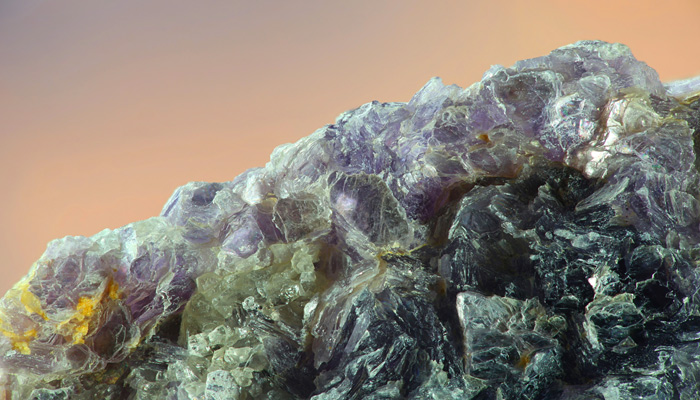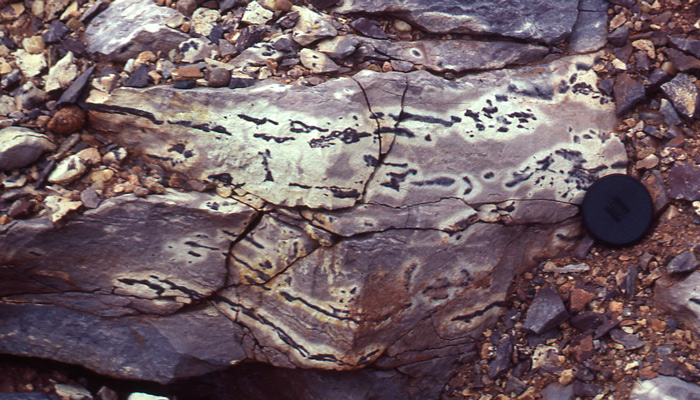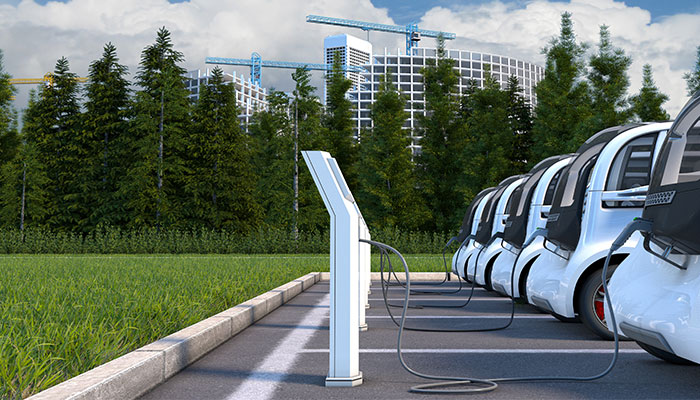Australia has just scratched the surface of the vast mineral deposits submerged beneath the continent, and many of the easy-to-find near-surface deposits discovered in the last century are close to being exhausted.

In demand: electric vehicles and touch screens have increased the need for minerals like lithium, cobalt and neodymium.
For two centuries, Australia has put most of its mining efforts into coal and iron-ore, which have generated substantial export income; but as renewables displace coal and demand for fossil fuels plummets, our mining efforts need to move to other in-demand minerals.
“Computers and smartphones have caused a massive increase in the world's annual copper consumption,” says geologist Professor Stephen Foley, from Macquarie’s Department of Earth and Planetary Sciences.
“There’s also fast-growing demand for minerals like cobalt, neodymium and lithium – used in such things as batteries for electric vehicles and in touch screens.”
But for Australia to participate effectively in the fast-growing market for minerals required by tomorrow’s economy, we need to have a thorough understanding of how - and where - mineral resources are formed.
Then we can work out the most efficient, effective and environmentally sustainable ways to find them, and then get them out, he says.
Minerals exploration last century located large high-quality deposits which have delivered huge and ongoing wealth – but we’re mining our minerals faster than we are finding replacement stocks and have almost exhausted Australia’s easily discovered near-surface resources, Professor Foley says.
Exploration hasn’t kept up with demand partly because about 80% of the continent is covered by regolith (soil and rocky deposits) and sedimentary basins (which are tricky to get beneath). Poor success rates have discouraged mining companies from investing extensively in further exploration.
“But we now know that a key to finding minerals in the top few kilometres of our planet – where we can most economically access them – is to understand the architecture and processes that occur much deeper in underlying crust and mantle lithosphere,” says Foley.
Deep structures a mystery
Beneath our feet, minerals are formed and transported within the planet’s changing physical states and rolling internal cycles, from the huge scale of plate tectonics and its associated volcanoes and earthquakes, to the rivers of molten rock and water that transport and concentrate metals in ore deposits, to the microscopic scale of individual mineral grains between which these melts and water move.
“Australia has a great opportunity to provide resources that are in huge demand globally,” says Professor Foley.
“Climate change is really pushing the move from petrol to electric vehicles (EVs) for example; but to make the batteries for EVs, and to meet the huge demands for electronics used in smartphones and the internet of things, we’re looking at a whole new mix of minerals and metals.”
He says that researchers are making important developments in deep exploration techniques.
“We’re uncovering far more effective remote sensing techniques, which give us a much better picture of what’s underground. It’s too expensive to do test drills when deposits are a few kilometres underground,” he says.
To this end, Macquarie researchers are working with a range of international partners to understand more thoroughly the systems that cycle through the deep earth to bring metals and minerals closer to the surface.
Their aim: to build a unified model of the systems that operate between the crust and mantle.
“There’s been a lot of investigation into the carbon cycle and the water cycle to understand where water and carbon go within the deep earth, but there’s much less known about what they are carrying, and how much of which metals are transported,” he says.
“We are now building those links. We’re asking, for example – what happens with copper? Is copper more to be found in a water-rich fluid, or is it in a CO2 rich fluid or is it in a melt - and when, how and why does it move? What effect have the changing regimes in the earth through its four billion year history had, at what stages in earth's history is copper more likely to have moved?”
Picture this

Subsurface images: Macquarie researchers are combining satelite-based remote sensing with seismic waves and a mega-geochemical database to build a new model of the earth's structure.
Foley says that there are a number of different ways to get a ‘picture’ of the Earth’s composition and structure.
“Geologists have for many years looked at the electrical conductivity of rocks, or they have taken the information from the seismic waves sent out by earthquakes,” he says.
Macquarie’s team is blending a range of different methods of subsurface imaging by combining electrical conductivity and seismic waves with satellite-based remote sensing and a huge geochemical database. They then create ‘joint inversions’ which integrate this information and allow it to be interpreted altogether.
“Also, we have a real legacy from the Centre for Excellence in Core to Crust Fluid Systems, namely a huge dataset of isotope mapping based on sample sediments from large areas, which can then be chemically mapped to identify the age of various surface rocks,” he says.
“This allows us to make up a model of the subsurface using a patented system called TerraneChron which operates in the geochemical labs here at Macquarie.”
Subterranean models
From next year, the team will also have access to four huge devices that allow high-pressure experiments, so that a small rock sample, less than a centimetre across, can be subjected to similar temperatures and pressures that exist in the deep earth.
“We are currently building the largest high-pressure laboratory in the southern hemisphere for investigating processes deeper than 100km,” Professor Foley says.
“We can test the chemistry of the movement of melts and fluids, conducting high pressure experiments to reveal the conditions of the deep earth, and which metals dissolve in which fluids and which melts.”
Duplicating conditions that exist 200km underground is an extraordinary feat. “There, we find pressures of about 60,000 atmospheres and temperatures of around 1200 degrees Celsius,” Foley explains.
By using a tiny sample, less than a centimetre across, and subjecting it to pressures in a machine that weighs tens of tonnes, the researchers are able to duplicate subterranean states.
“The geosciences are already undergoing an unprecedented new coordination - industry, government agencies and academics are now talking and agreeing on what needs to be done in research,” Professor Foley says.
“Understanding our vast resources is the key to Australia’s ability to continue to be a global resources leader for the next century and beyond,” he says.




